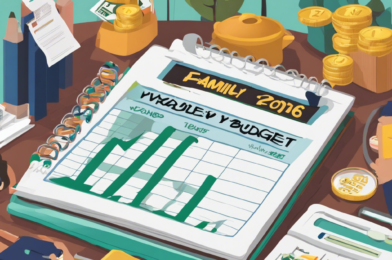Are you feeling overwhelmed by your spending habits and looking to regain control of your finances? A no-spend month could be the solution! It’s a powerful financial strategy that allows you to reset your spending patterns, save money, and re-evaluate your relationship with money. Here’s a step-by-step guide to help you plan and successfully navigate your no-spend month.
**Step 1: Set Clear Goals**
Define your objectives for this challenge. Are you aiming to reduce debt, save for an emergency fund, or simply curb impulse buying? Clear goals will keep you motivated throughout the month. For instance, you might decide that paying off half of your credit card debt is the primary goal for your no-spend month.
**Step 2: Choose Your Timeline**
Select a month when you’ll be less likely to face high expenses. Avoid periods with significant birthdays, holidays, or travel plans that could make sticking to a no-spend challenge more challenging. Remember, the idea is to make the process as manageable as possible.
**Step 3: Determine the Rules**
What expenses will you cut or reduce? Essentials like rent, utilities, and groceries usually remain but can be optimized. Discretionary spending, like eating out, entertainment, and non-essential shopping, is typically what you’ll aim to eliminate.
**Step 4: Plan Your Meals**
Meal planning is crucial to reducing food waste and saving money. Create a monthly meal plan and shopping list, focusing on inexpensive, nutritious ingredients. Cooking at home saves money compared to ordering in or dining out.
**Step 5: Engage in Free Entertainment**
Explore free activities such as hiking, local community events, picnics in the park, or movie nights at home. If you love reading, utilize your local library instead of buying new books.
**Sticking to the Plan:**
Staying committed to your no-spend month can be challenging, but these strategies can help:
– **Track Your Progress:** Regularly record your expenses and savings to see your progress and stay motivated.
– **Find an Accountability Partner:** Share your goal with a friend who can support and motivate you throughout the month.
– **Visualize Your ‘Why’:** Keep a visual reminder of your financial goals to stay focused.
– **Avoid Temptation:** Stay clear of situations that trigger unnecessary spending, such as window shopping or browsing online stores.
– **Replace Spending with Savings:** Every time you resist an impulse purchase, transfer the amount you would have spent into a savings account.
A no-spend month is a great way to reassess your spending habits and gain financial freedom. It may not be easy, but the benefits can be significant. So, are you ready to give it a try? Your financial future is within your control.










